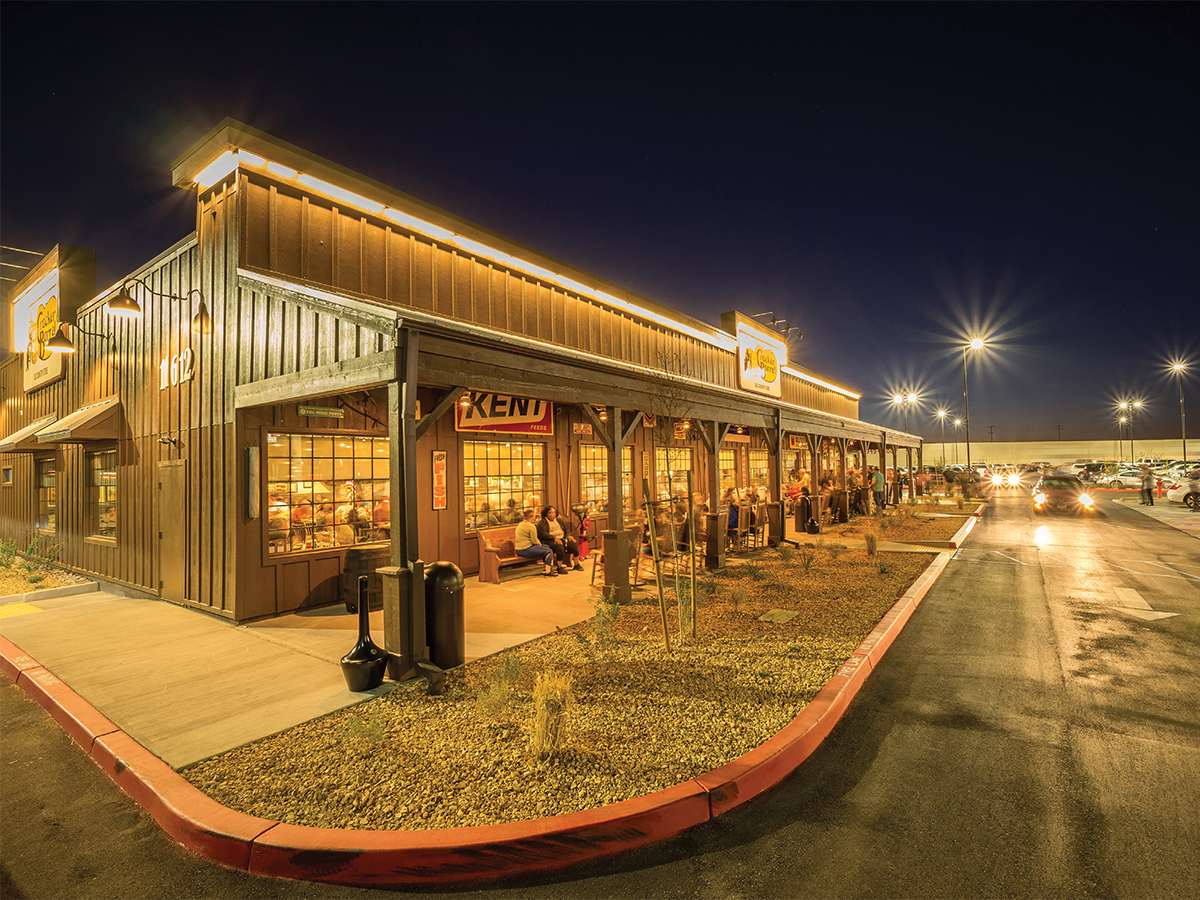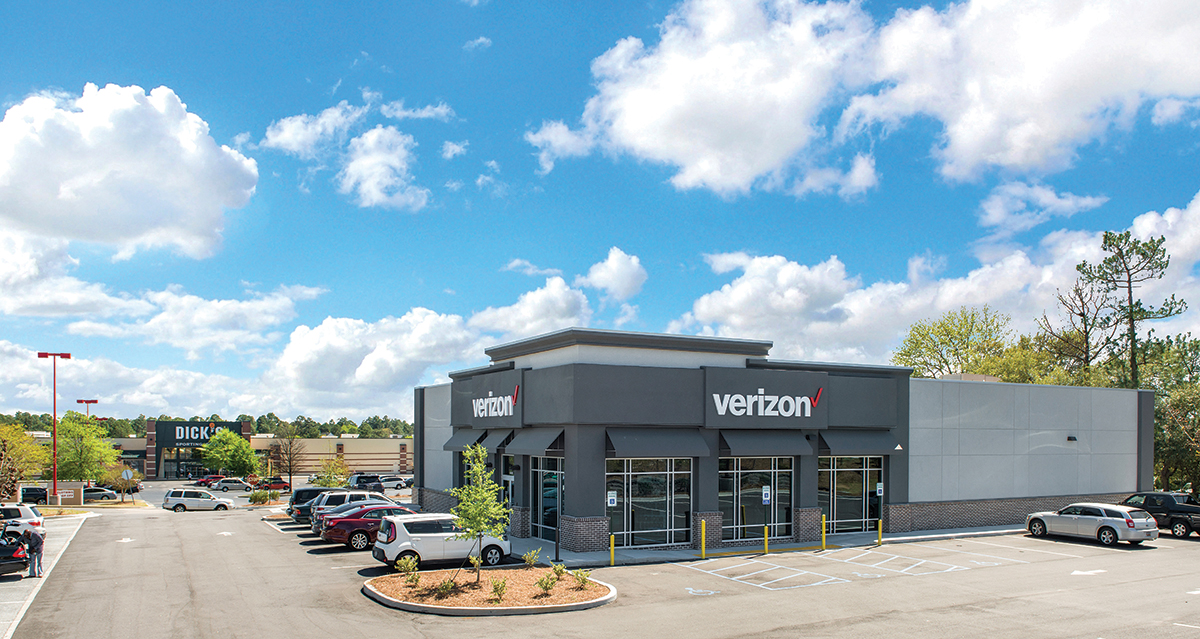Safety Net?
Interest in single-tenant net-leased properties is gaining momentum. A strengthening economy and the newly introduced 20 percent deduction on income from pass-through entities are some of the factors behind this trend.
By Robyn A. Friedman

A Cracker Barrel restaurant was one of three in Victorville, Calif., sold this spring by Marcus & Millichap.
Investor interest in single-tenant net-leased properties (STNL) is nothing new. This type of asset has been desirable for some time, particularly for investors seeking a more passive commercial real estate investment that requires less day-to-day management. And, because the assets generally come with long-term leases and stable tenants—many of which are in businesses that offer some protection against e-commerce, such as food and beverage or health care—they are attracting not only the traditional individual investors who have favored this sector but also institutional investors such as real estate investment trusts (REITs), pension funds and others seeking investment-grade assets.
Strong Fundamentals
STNL properties are probably about the most passive investment one can make in commercial real estate. As opposed to a gross lease, where the tenant pays rent and the landlord pays expenses, a STNL tenant is responsible for all of the expenses associated with the property, including taxes, insurance, maintenance and utilities. Hence, the tenant assumes control over the property, and the landlord doesn’t have to actively manage it.
STNL is good for landlords because it provides a steady stream of relatively passive income from a long-term, stable tenant, and it’s good for tenants because they can exercise more control over their expenses, giving them autonomy over how their property is managed.
Retail has traditionally been the most popular type of asset for STNL investors; Walgreens and CVS pharmacies are a common example. Discount stores, such as Dollar General, are common uses too, as are standalone restaurants such as McDonald’s. Medical-office buildings and even industrial uses such as car washes and warehouses are also increasingly being used as STNL properties.
Marcus & Millichap announced in June that it sold three net-leased restaurants between April 9 and May 18 in Victorville, Calif. The tenants are Cracker Barrel, BJ’s Restaurant and Brewhouse and The Habit Burger Grill. Cap rates ranged from 3.45 percent to 4.5 percent. The three assets were built in 2017, and all had corporate-guaranteed, triple-net leases with 14 to 19 years remaining, making them very attractive investment to buyers.
In addition to the net-leased restaurants, Marcus & Millichap also sold six net-leased medical-office buildings in Arizona between Jan. 25 and April 30 this year, for $27.115 million.
“Net-leased medical offices are extremely attractive investments, as medical professionals tend to invest heavily in their workspaces and commit to their locations,” said Jamie Medress, an executive director on the firm’s net-lease investment team.
What’s driving investor interest in STNL?
- A strengthening economy. After a dip in April, consumer confidence rose in May to a 17-year high. Retail sales were forecast to grow as discretionary income rises.
- Demand for brick-and-mortar products and services. Many STNL businesses are resistant to competition from e-commerce. Restaurants, drug stores and medical services still require physical locations.
- Promising retail metrics. Although many stores have closed, others are doing well and are actually taking new space. Dollar stores, for example, are strong performers, as are grocery stores, which are need-based and less affected by competition from online retailers.
- Tax reform. Key provisions benefiting commercial real estate remain in place, and, according to Marcus & Millichap’s January 2018 Special Report on the Tax Cuts and Jobs Act, net-leased properties are positioned favorably due to the newly introduced 20 percent deduction on income from pass-through entities. “On an after-tax basis, the yields offered by the sector will be even more compelling than under the previous tax structures,” the report states.
According to Jim Costello, senior vice president of Real Capital Analytics, “deal volume for single-tenant assets was off to a comparatively weak start in 2018,” with volume down by 19.3 percent year-over-year in the first quarter, compared to an increase of 5 percent YOY for commercial property generally. But industry experts say that’s no cause for alarm.
“The first-quarter results are probably a bit of a carryover from last year,” said Scott Holmes, a senior vice president at Marcus & Millichap and the firm’s national director, retail, who added that the market was “held back” by investor uncertainty over the new tax laws and an increase in the 10-year Treasury note. “When things move too much, it can impact cap rates,” he said. “Sellers and buyers were sitting on the sidelines last year, but now that we have clarity, we’ve seen people transacting a lot more. But you wouldn’t see that reflected in closings during the first quarter of this year.”
The Players in STNL
Traditionally, individual investors have been active in the STNL space, and they remain so, as many apartment investors in particular sell multifamily assets in search of higher cap rates.
“There’s a large capital shift going on right now for people who are retiring and want more passive investments,” Holmes said. “Single-tenant net lease makes a lot of sense for them.”

Columbia Development built a 6,000-square-foot store last year for Verizon Wireless in Columbia, S.C.
REITs and institutional investors are active in the STNL space as well, although the market is still fragmented.
Scottsdale, Ariz.-based STORE Capital Corp., a net-lease REIT, has a diversified portfolio consisting of investments in more than 2,000 locations in 49 states. “We’re focused on middle-market and larger companies,” said Mary Fedewa, STORE’s chief operating officer. “These are companies that are very real-estate intensive. They need their real estate to operate and to grow.”
STORE’s top 10 customers include Art Van Furniture, the Midwest’s largest furniture retailer; Bass Pro group, which operates Bass Pro Shops and Cabela’s; AMC Entertainment, which operates movie theaters; and Cadence Education, an early-childhood education firm.
Developers are also active in this space, frequently doing build-to-suits to meet a particular tenant’s needs. For example, Columbia Development, based in Columbia, S.C., last year built a 6,000-square-foot freestanding, single-tenant store for Verizon Wireless on an outparcel along a retail corridor in Columbia. Verizon was relocating from an older store down the street. Columbia subsequently sold the building.
“The drive for favorable yield remains the essential element for investing in net-lease operations,” said Coke Mann, Columbia’s co-founder. “Net-lease assets are well positioned to satisfy both yield and diversification requirements, as well as offer a relatively low-risk investment option. Longer lease terms, corporate guarantees, absolute NNN structure, dense retail corridors and first-to-trade-area retailers are key characteristics for successful retail net-lease investment.”
Returns Worth the Risks
Marcus & Millichap’s Holmes said that returns vary on STNL properties, depending on the tenant’s credit, the lease term and the location. In gateway markets, he said cap rates are “sub-6,” but in the middle of the country, investors are more likely to see cap rates in the 6 percent to 7 percent range. “That’s a pretty good spread if you’re an apartment investor selling your apartments in California at a 4 cap,” he added.
And, although the forecast for the sector remains good through the end of the year and into 2019 based on the fundamentals discussed above, there are risks inherent for investors in STNL.
Tenants in these properties typically invest significantly in the interior buildout to customize the property for their own uses. Whether it’s machinery in an industrial property, a commercial kitchen in a restaurant or medical equipment in a physician’s office, the tenant seeks to make the property their own. And, although STNL properties are usually subject to long-term leases, often 10 years or more, once the tenant moves out, the landlord may be left with a building that’s so specialized that it’s difficult to re-lease or sell.
“If it’s a very unique building—if anything is specialized—it become difficult to find a second tenant who needs that same specialized building,” said Rene Circ, director of research at CoStar Portfolio Strategy.
In addition, since the lease terms are so long and STNL tenants essentially control the building, it’s incumbent on landlords to ensure that they lease to credit tenants. “What I’m underwriting is how likely they are to actually pay me for 20 years,” Circ said.
Images courtesy of Marcus & Millichap and Columbia Development.
You’ll find more on this topic in the CPE-MHN Mid-Year Update 2018.







You must be logged in to post a comment.